
Assessing Neighborhood Safety - Gang Graffiti
In my book Choose Adventure - Safe Travel in Dangerous Places I have a section of advice discussing how to assess whether an area is “safe” or not in a foreign country. I wrote:
“Given the massive differences in culture, customs, and income, how can you tell if the neighborhood you are visiting is safe or not? These guidelines may be pretty basic, but using them will give you a quick assessment of your relative safety in any neighborhood in the world:
- Are there lots of armed guards?
- Do the properties seem to be run down or uncared for?
- Are people in the area walking in pairs or small groups rather than walking alone?
- Is there a lot of graffiti present on the walls?
- Are there obvious security measures (like broken glass embedded atop walls, electric fences, barbed wire, etc.) present?
- Are there lots of people are aimlessly “hanging out” in the street?
If you answer “yes” to most of these questions, you may not be in the world’s safest place. It’s time to move on.
Beyond looking at these six factors, take a second and observe your environment to get a subjective “feel” for the location. Is there more order or disorder? Broken windows, graffiti, trash, fireworks, and items out of place are all signs of disorder. Recent criminological studies have shown that there is a corresponding increase in crime as disorder increases.”
I’m living in Mexico right now. I was reminded of this passage as I was walking around my neighborhood.
I’m renting a condo in a very nice and secure building in Playa del Carmen. My neighborhood is fine, but I’m right on the boundary between the “tourist area” and the area where the locals live.
I’ve discussed transitional areas before. One block away from my condo is the transitional area between high dollar tourists and economically disadvantaged locals. It’s far from a dangerous place, but if you aren’t paying attention, you could quickly find yourself in a bad neighborhood.
Yesterday, I was running sprints at a local track that was maybe 10 blocks away from my condo. As I walked to and from the track, I noticed a lot of graffiti. As noted above, graffiti is generally a sign of disorder and a likely indicator that you may be in an unsafe area. But context matters as well. That’s what inspired this article. Not all the graffiti I saw was a danger sign. How does one know the difference?
I am far from an expert on gangs. We didn’t have any gang violence in the town where I worked as a cop for 25 years. That being said, I’ve always been curious about gang communications and I’ve been to quite a few gang-related police training classes over the years.
I’ve read lots of books on deciphering gang graffiti as well. I’ve concentrated much of my research on the Latin gangs as I spend so much time in South and Central America. I’ll use some pictures I took along my walk to help you understand some things about graffiti.
Here’s the first gang tag I saw on my walk.
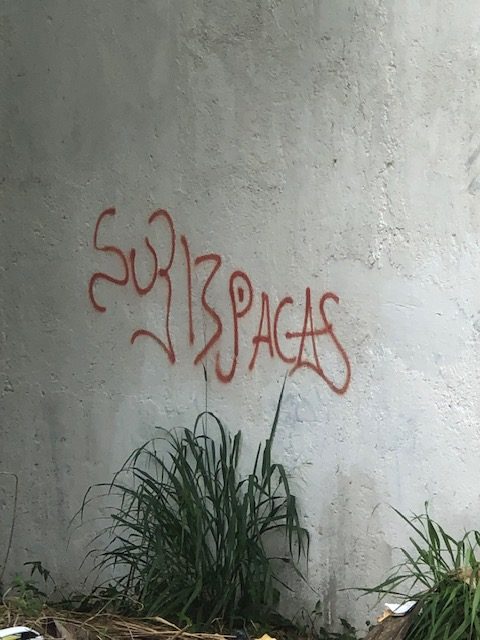
If you can’t read it, it says “Sur 13 Pacas.”
“Sur” indicates “Sureno,” meaning “Southerner” one of the big Mexican gang confederations. They are rivals with “Nortenos” or “Northerners.”
The number 13 indicates the group’s affiliation with the Mexican Mafia gang. The Mexican Mafia is called “Eme” (the letter M) for short. M is the thirteenth letter of the alphabet.
“Pacas” is Spanish for “bales” as in bales of marijuana. I’m only guessing here, but I’ll go ahead and make the assumption that this particular set runs in the neighborhood and that they might be involved in drug dealing.
One of the other factors that helps identify gang graffiti from more innocuous “tagging” is the presence of certain stylized words or letters that form a symbol recognized by gang members. It’s like a secret gang language. See how the letter P has a dot that looks like an eye? I don’t know what that means, but I can make a guess. Turning letters into symbols like an eye, a crown, a star, an arrow, or some other object is indicative of gang graffiti.
When the particular neighborhood is jointly claimed by more than one gang, you will often see one gang sign crossed out and overwritten by another gang’s symbol or name. Nothing like that here. No other gang names anywhere around and this one appears to have been there awhile without being defaced. That most likely means that the Sur13Pacas have reasonable control over the territory.
I saw a lot more graffiti on my walk. None of it was gang related and wasn’t indicative of anything other than the fact that the police don’t likely patrol the area a lot at night and the property owners don’t really care about their property. How can you tell the difference?
Take a look at these two photos.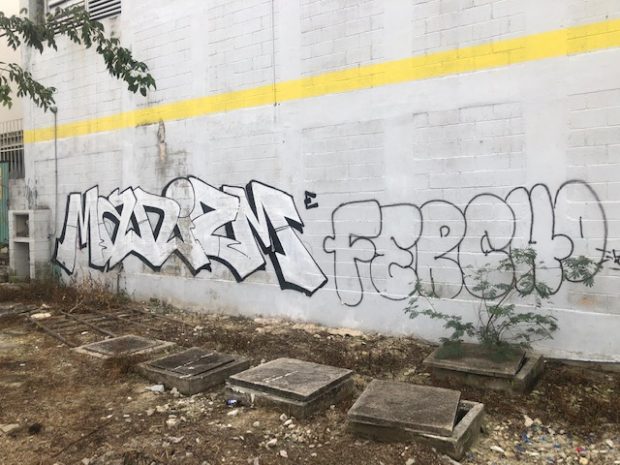
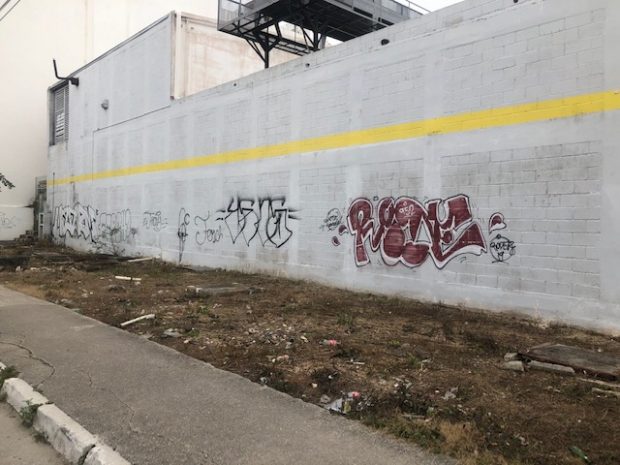
See how these are bigger, more colorful, and more ornate? Notice how they are individual names or nicknames and not names of a group? Notice how they are adjacent to one another without being crossed out or defaced?
These are most likely not gang graffiti. This is probably the work of teen graffiti artists known as “taggers.” Some taggers do artwork for gangs, but many of them are independent street artists. They are the same kind of people who paint their names on water towers, walls, and train cars in your hometown. These indicate that a neighborhood doesn’t get much police contact at night, but aren’t necessarily indicative of danger.
On the same wall I saw this piece of graffiti. I couldn’t figure it out. Any guesses?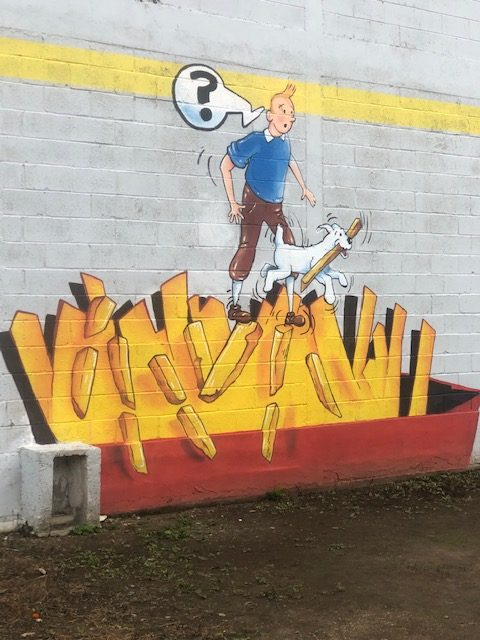
Remember how I stated “context matters?” The context became clear when I walked the same route home after my run. Here’s what I saw.
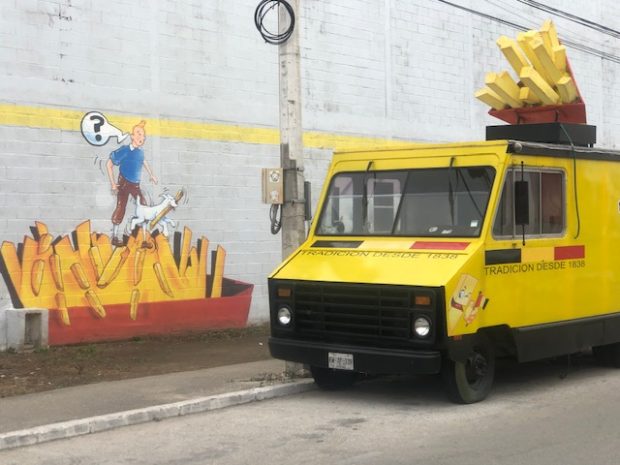
That was the normal parking location of the local French Fry truck. The “gang graffiti” was merely an advertisement painted by the truck owners to stake out their territory and keep other food trucks from parking in the area. Graffiti may be about territory, but it’s not always about gang territory.
More contextual stuff. What would you think if you saw this?
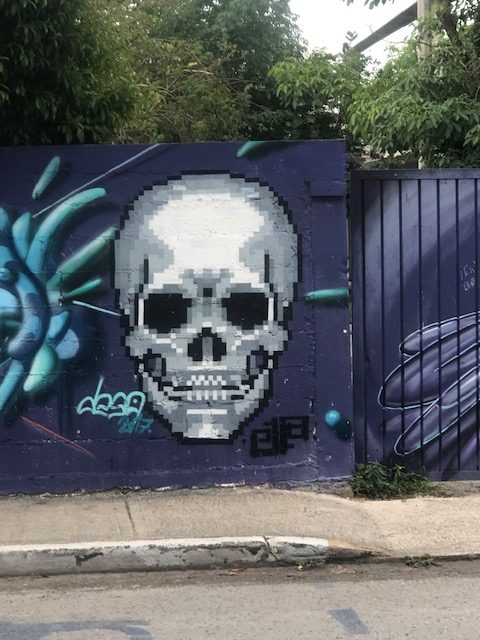
Doesn’t look good, does it?
But in context, as part of this large mural, do you feel the same way? Does this look more like disordered and random graffiti or more like a public art project?
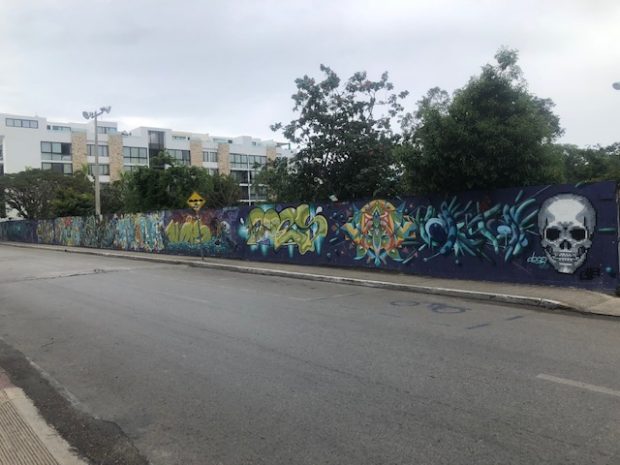
I did some research. This is a wall surrounding an elementary school playground.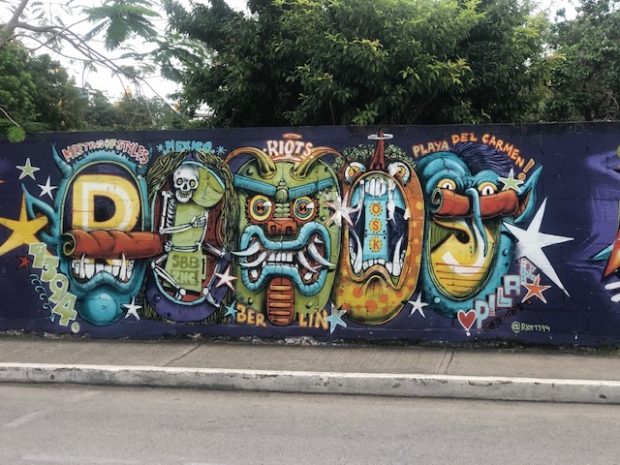
According to the locals I spoke with, a group of local taggers and artists (represented in the photo above) got together and artistically decorated the walls of the school playground as a public service to make the area more fun for the children and less unsightly for the residents.
Spray painting school walls may not be a common thing in America, but different cultures have different ideas about what is appropriate. This mural had widespread public support and no other tagger would dare deface it.
This is a sign of neighborhood cohesion, not neighborhood disorder.
Many times graffiti is a sign that bad things are happening in a neighborhood. Sometimes it’s the exact opposite. A skillful and informed traveler will understand the difference.
Greg Ellifritz is a retired firearms and defensive tactics training officer. He holds instructor or master instructor certifications in more than 75 different weapon systems, defensive tactics programs and police specialty areas. Greg has a master's degree in Public Policy and Management and is an instructor for both the Ohio Peace Officer's Training Academy and the Tactical Defense Institute.
- 2197 reads

